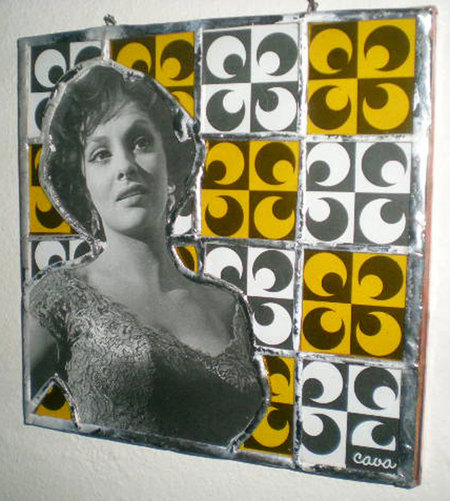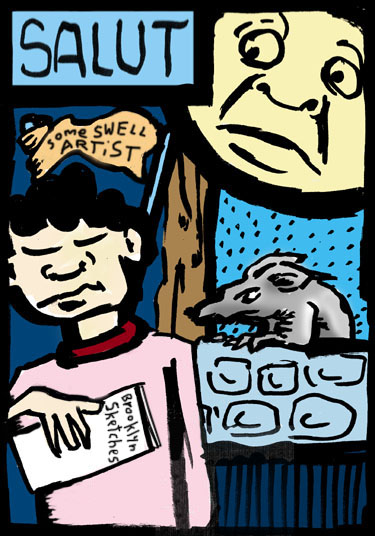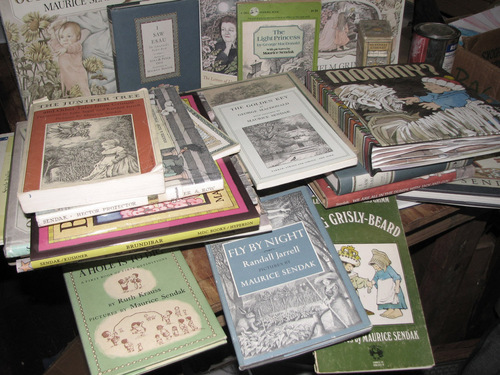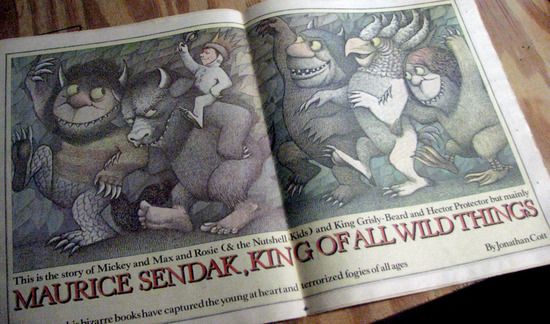May 26, 2012
Joseph Cavalieri Interviewed by the American Craft Council
Stained Glass, Pop Icons, interviewed by Monica Moses, for the American Craft Council website. via twitterer @IGGAchat
Gina Lollabrigida in Giallo, by Joseph Cavalieri

May 23, 2012
John Piper - Exhibition and Desert Island Discs
John Piper and The Church
If you are near Dorchester Abbey, Oxfordshire today (I will be about 4000 miles away, alas), there looks to be an interesting talk by Martin Harrison (author of the very good and hard to find book Victorian Stained Glass) on the stained glass of John Piper as part of the exhibit John Piper and The Church, at Dorchester Abbey, Oxfordshire, 21 April - 10 June 2012.
I did a short blog post about 5 years ago on John Piper, featuring his Nativity window, Christud Natus Est!, which I quite like. At that time there was a John Piper website, which is now gone (http://www.johnpiper.org.uk - archived page)
But such is the quasi-organic nature of the web that while some things disappear, other surprising things pop up to replace them.
John Piper on Desert Island Discs
John Piper on Desert Island Discs
Desert Island Discs is a BBC radio show that has been airing continuously since 1942. In the show, guests are invited to imagine themselves cast away on a desert island, and to choose eight pieces of music to bring with them. Subsequently, as the mix of music and conversation proceeds, you get a mini-biography of the person via their favorite pieces of music. It's a great concept and I can see how it has lasted so long.
All the programs from the past 25 years are now available to listen to online. Recently they started posting episodes from pre-1986, adding an additional 445 programs. Currently they have archived and posted over 1,500 past programs, the earliest going back to 1951.
One of the episodes that came online in just the past few weeks is with artist John Piper who, as far as I can tell, is the only stained glass related personality to be interviewed in the 70 years of the program. He only talks briefly of his stained glass work but the program is interesting nonetheless, mostly as a time capsule into British culture of the mid-20th century.
In general, I'm big on listening to radio shows like this (audiobooks too) when I'm working on the bench.
May 22, 2012
Let There Be Light Kickstarter Campaign Last Days
JUST 3 DAYS LEFT!!
Been terribly busy or I would have posted this sooner.
Peter Swanson's Let There Be Light Kickstarter campaign, raising money for the filmmaker to finish his documentary on Rowan LeCompte.
It's only 3 days to go and he still has to raise $7000, so I suspect all interested will be putting on the full court press to try to raise the extra money.
It may be a little too late to implement this but I do have one suggestion that might help. I seem to remember Swanson mentioning a figure in one of his promos of editing the film down from more than 80 hours of footage. If this is true then it seems logical that he has at least a few hours, perhaps many, of raw interview footage with Rowan.
I would suggest he offer another level of reward with that raw interview footage on DVD as a reward. It doesn't seem like that would be too expensive to compile, but it would be of real interest to places like archives, and even some individuals. The more footage the better and price it in the $500-700 range. I think there would be some interest, however specialized. Who knows, it could just provide that extra last minute juice to help it go over the top.
In any case, Best of Luck Peter!
May 16, 2012
Seven Days of Sendak - 7- Humor
One thing that people do forget about Sendak, especially in his final years when he was so dark and curmudgeonly, is that he could be very funny. I find The Nutshell Library one of his funniest books. I also like the more obscure, and some (in Tennessee anyway) would say obscene book, I Saw Esau. Check them out.
Meanwhile, though this has gotten enormous coverage on the internet following Sendak's death, there is the appearance by Maurice Sendak on The Colbert Report (goes to my original post on the original Colbert Report Appearance, with embeds there). Plus here is some additional footage on The Colbert Report Maurice Sendak Tribute from the day he died. They make for a curious, but hilarious epitaph to the life of Maurice Sendak.
May 15, 2012
Seven Days of Sendak - 6 - Courage
And we get to "Late Sendak", a fearless, curmudgeonly and much darker version of his younger self. Curiously, as his books became less and less mainstream, his fame grew, and the articles, appearances, short promo videos and long interviews grew as well.
At least his darkness, his moroseness, was well earned. Everybody faces tragedy in their life at some point, but few face as much adversity as Sendak did in his childhood. He was a sickly child who was assumed to be on death's door through much of his early childhood. He was involved in the accidental death of a playmate when 6 or so. Worst of all was his relationship to the Holocaust, with the news that his father's family had been killed coming on the very day of Maurice's Bar Mitzvah. I can't even imagine that degree of trauma. That he could take those events in his childhood and use it to celebrate the resilience of children is to me his greatest legacy.
The best interview where Sendak gets into these darker chasms of his story is his 2004 interview with Bill Moyers.
Bill Moyers: My Time with Maurice Sendak
May 14, 2012
Seven Days of Sendak - 5 - Tributes
Some artist tributes to Sendak -
This from last week, in the New York Times -
Thanks, Maurice
and this blog created a few years ago, coinciding with the release of the live action movie version of Where the Wild Things Are -
Terrible Yellow Eyes
This is my own humble tribute, trying to work in Maurice's "late style", but looking back on the young Maurice. This was drawn many years ago and put on my drawing blog.

[update - another tribute just today, rather weird funny one - Avengers on Parade (RIP Maurice Sendak)
May 13, 2012
Seven Days of Sendak - 4 - Books
Maurice Sendak wrote and/or illustrated about 100 books in his 65 year career. After Sendak's death last week I gathered all the Sendak I have and I've got about 30 or so of his books. They favor the more obscure ones, though I do have a copy of Where The Wild Things Are as well.
Surprisingly, there is no good comprehensive bibliography of Sendak's works that I could find on the web. There is good bibliographic list on his Wikipedia page. but there are only links to a few of the more famous books. To my knowledge Sendak never sanctioned a website of his work. The Rosenbach Library, which is the official repository of his works, does have many small treats on their website but not a big comprehensive, visual bibliography. In time, I hope.
My Vintage Book Collection in blog Form's Tribute to Maurice Sendak - Note the links on the page to scans of some of the more obscure individual books like I'll be You and You Be Me and Hector Protector.
May 12, 2012
Seven Days of Sendak - 3 - Misc Links
Various links showing up in the last few days -
Maurice Sendak: Concerns beyond just Where the Wild Things are, By Patricia Cohen, September 10, 2008
Remembering Maurice Sendak, by Geeta Dayal, WIRED, May 8, 2012
Understanding Children, Yet Wanting Them to Grow Up a Bit, New York Times
Maurice Sendak defined - STL Today - Although not religious, he was absorbed with his Jewish roots, and his stories were infused with Jewishness.
My Hero: Maurice Sendak, by Neil Gaiman, at guardian.co.uk, Friday 11 May 2012.
Fresh Air Remembes Maurice Sendak. with links to four separate Fresh air interviews from 1989 to 2011. Top notch.
Comic Journal Q&A
May 11, 2012
Seven Days of Sendak - 2 - at Harvard Audio
I never met Maurice Sendak, but I did see him speak in three different personal appearances. The first was the best, and it was recorded -
Setting the scene - It's 1983 and Sendak was at Harvard University for a student theater production of Really Rosie. He was speaking as a part of Harvard's Learning From Performers program, and fortunately for me, it was open to the public. The talk was at Eliot Library, and Sendak was standing behind a wingback chair. The place was jam packed and there were people sitting on the floor and standing all along the walls and windows, even spilling into the hallways. As I had gotten there early, I was sitting in a nice comfy chair, only about 10 feet away from Sendak. After a brief introduction and statement, he took questions for nearly 2 hours. It was pretty amazing. The clarity and insight of his intellect was very impressive, and he was funny too.
Audio recordings (the files are pretty big, both are nearly 28 mb) -
Maurice Sendak at Harvard, 1983, part 1
Maurice Sendak at Harvard, 1983, part 2
This was recorded on cassette tape so there are some skips and jumps, but the sound quality, at least of his voice, is surprisingly good. It is hard to hear most of the questions though.
The file should open up whatever sound player you have on your computer, or download it. I've tried the files on a number of different computers and all seem to handle it fine. Each part runs for about an hour.
I broke it down into sections, if you want to skip through it.
you can see below the fold...
all times are approximate -
PART 1
0:00 - 11:00
Intro by Learning From Performers person
Sendak gives a brief statement, mostly about his move from print work
into theater work. At the time he was in the midst of doing sets and
costumes for the Pacific Northwest Ballet version of The Nutcracker.
11:00 - 16:45
Being a Children's book author, and what did you read as a child?
16:45 - 24:00
Origins of Outside Over There
His obsession with the Lindbergh Kidnapping case.
Being a sickly child
Askled if there is a formula for writing children's books
Asked how old he was when he learned to read
24:00 - 30:50
Asked about the origins of the Wild Things
and how New York has been an influence on his work
Very funny details of how his Jewish relatives inspired the Wild Things
Also asked why Wild Things was controversial
30:50 - 36:50
Do critics read into your books?
Do you like to read about artist's lives?
What do you think of Sesame Street?
What do you think of socially relevant books for kids?
What have been the hurdles of moving into theater?
36:50 - 42:30
Did you work to obtain a 'style'?
talks about how he doesn't like Arthur Rackham.
art and writing question
How do you fee about the impermanance of the theater compared to print?
42:30 - 48:00
Would you ever illustrate a Wagner opera?
How would you educate children?
What was your art education?
How did you develop your writing talent compared to drawing?
48:00 - 54:50
Relates the experience of photographing children for Outside Over There
Talks about seeing Really Rosie on stage with young adult actors
Asked about illustrating the book The Juniper Tree.
54:50 - 59:45
What is your working routine?
Talks about how his love for bad TV fits into the routine
Asked about the weston woods film of Wild Things
Asked why he thinks The Juniper Tree is such a good story?
PART 2
0:00 - 6:00
Continuing on about The Juniper Tree.
Would you ever illustrate an adult book?
Would you design for Broadway shows as opposed to Opera?
Experience of working in Opera.
6:00 - 12:50
Do kids write you letters?
The Toronto 'Outside Over There' letters
A note from Danny
What is the background for In the Night Kitchen?
12:50 - 24:00
What is the origin of Higglety Pigglety Pop?
What about Pierre?
Where did Pierre come from?
15:00 - 17:20
What responses are there to your books in other countries?
What do think about the translations?
17:20 - 19:30
How do you feel about being famous?
You said you were timid in the past - where were you timid in some of your other books?
19:30 - 24:15
How do you approach set design?
How do you adapt illustration ot set design?
What is your work process for set design?
24:15 - 31:45
Is the story true of an autistic child speaking their first words after exposure to Wild Things?
What was your technique for Zlateh the Goat?
How have you been influenced by comics?
Relates his early job working in comic strips.
Are you still interested in comic strips?
Relates his thoughts on Little Nemo.
and how comic book artists are pigeonholed like children's book artists.
31:45 - 34:00
What kind of things do you think you can do on the stage that you cannot do in children's books?
How much do you think of the audience when you work?
34:00 - 38:30
Do you have contact with other children's book authors and illustrators?
Talks about William Steig, Tomi Ungerer and Dr. Seuss.
Relates his theories on the psychology of Dr. Seuss.
38:30 - 41:30
So do you really just make the work for yourself?
Were you influenced by EC comics?
What about your animated films?
Tells of The animated Really Rosie.
Will you do it again?
41:30 - 49:45
Re: Outside Over There, is there a sexual undertone to it?
What are the things you said you wish you could express, but can't?
Talks about the 'all powerful female mystery'.
How does Outside Over There relate to the set designs for The Magic Flute?
Do you think people will see those things you put into your work?
49:45 - 52:30
Do you feel a need for being socially responsible?
What about social committments?
Did you consciously choose children as models?
52:30 - 54:46
You seem so at ease answering questions - do you do this often?
Do you do a circuit? Or much public speaking?
No, and on that note, I'll stop speaking.
May 10, 2012
Seven Days of Sendak - 1 - Rolling Stone Inerview
Maurice Sendak (1928-2012)
I'm going to be posting various things about Maurice Sendak for the next 7 days. Call it my own way of sitting Shiva for Sendak. Is there such a thing as "blogging Shiva"?
Though I knew and loved Where the Wild Things Are from the time I was about 7 or 8 (when the book had been out 3-4 years), my obsession with Sendak springs from a single magazine article - an interview by Jonathan Cott in Rolling Stone magazine in 1976.
Rolling Stone posted the interview, Maurice Sendak, King of All Wild Things just after Sendak's death on Monday. The article is still a great (if long) read, though the website version does not give any pictorial context. You have to see the original printed design and layout for that.
I scanned my own copy and you can download it here, if only to see the pictures that are mentioned in the article. The picture quality is only so-so, being almost 36 year old newsprint - Hi Res version (35 mb pdf) - Low Res version (8 mb pdf)

